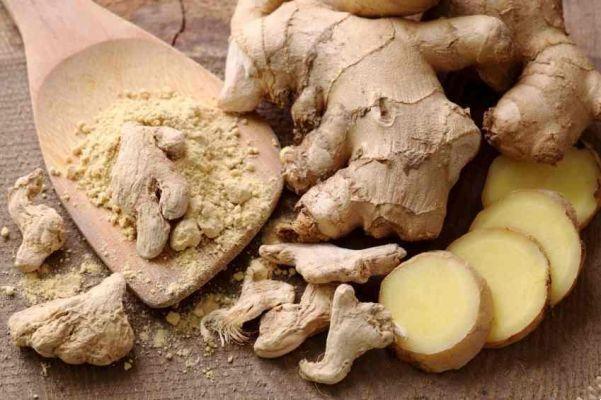
Lo ginger derives from the rhizome of the plant Zingiber officinale.
The rhizome is the underground part of the stem of this herbaceous plant. It is fresh, with an irregular and striated shape, with protuberances and an ocher-colored skin.
Ginger is very juicy and has a fibrous pulp, more or less depending on the freshness. It is used in the kitchen in many recipes of traditional Middle Eastern cuisine, and for medicinal and therapeutic purposes.
Ginger has numerous property: level culinario it is renowned for its fragrance and its being spicy and pungent.
Ginger, in addition to bringing particular flavor to recipes, has digestive properties, antioxidants and it is useful for nausea plating.
Favors the bile production by the liver, and so it can be useful in digestion of fatty foods, with which it can be perfectly combined, warms the stomach and increases the secretion of saliva, improving the digestion of starches.
Ginger also stimulates the appetite and freshens the breath.
Read also Ginger in Ayurvedic medicine >>
Ginger in the kitchen
In cooking, ginger can be used:
> Fresh: sliced or grated; it maintains its specific properties unaltered and the flavor is intense, very fragrant and spicy;
> In dust: with a less intense but more pungent flavor, a minimum quantity is enough to give flavor to the dishes;
> Marinated: it is the ginger that is usually found accompanied with sushi; it has a sweeter taste, as it is marinated with rice vinegar and sugar, and cut into very thin and soft slices;
> Candied: cut into cubes or slices, sprinkled with sugar and used mainly for desserts.
In kitchen ginger can combine to various other ingredients: starting from the flavor you can experience what, in the kitchen, goes best with ginger. It can be combined with sweet and savory: in winter desserts, based on leavened products and other aromas, such as together with cloves and cinnamon.
And in the both cooked and raw savory dishes: cooked ginger warms, and raw gives a pinch of freshness.
Grated ginger can also be used in pasta, to enhance a light dressing such as a chickpea or lemon cream.
In salads, it is very good with fennel and orange, raw. Lime, lemon, and mint also happily combine with ginger, refreshing recipes but warming the stomach and aiding digestion.
Un interesting combination and particular for ginger consists in combining it with sweet vegetables, such as potatoes, or squash. Velvety or risottos made with these three ingredients are pleasant and particular on the palate. You can also use ginger paired with garlic, or in sautéed shallots.
Finally, ginger goes very well with fish, with shellfish, both cooked and raw.
Ginger is collected mainly in winter. It combines perfectly with winter vegetables, rebalancing, according to macrobiotics, the nature of what is available in this season.
Its versatility makes it suitable, however, for any season. To get to know it well, just try it, adding it little by little to the various dishes, tasting and experimenting.
Read also Candied ginger, how is it done?


























